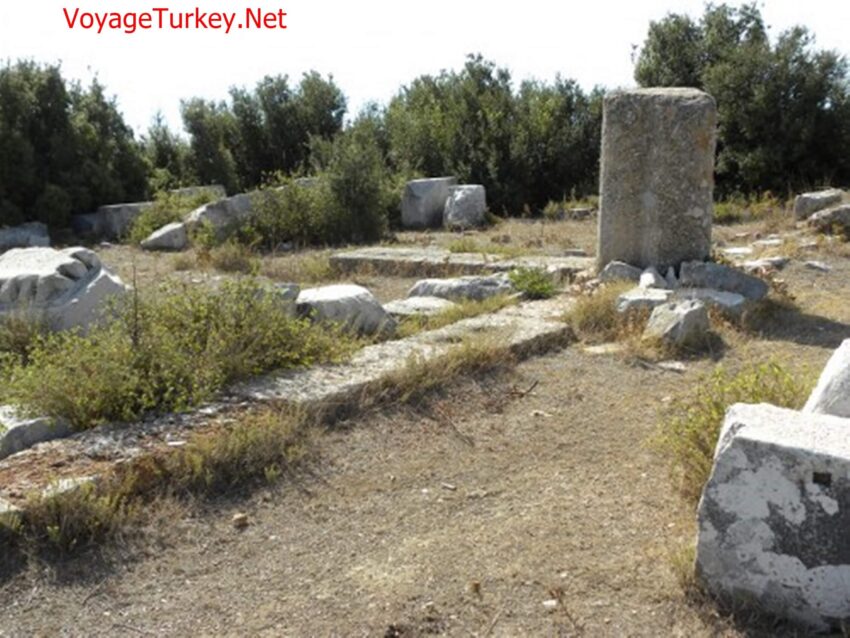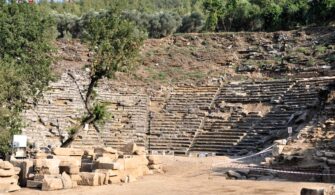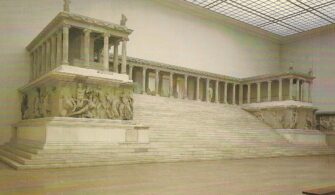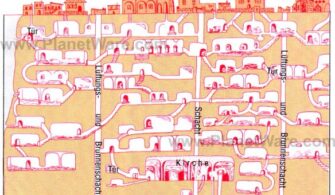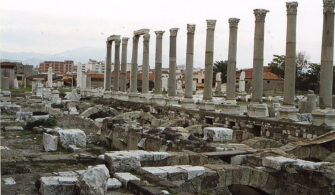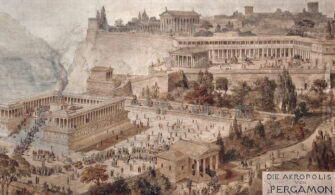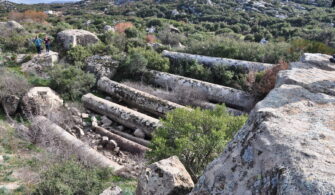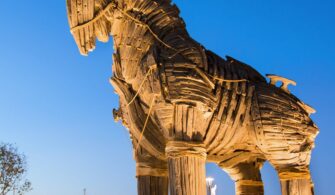If you visit the ancient city of Kolophon or Claros Apollon Prophecy Center in Izmir, you should also visit the ancient city of Notion, a port city. Notion, meaning “The City in the South”, was a city of Aiol.
Aiols initially settled in Thessaly and Boiotia in Greece, but they migrated to the western coast of Anatolia due to various problems and established various cities there.
These people have established various cities in the coastal region up to the Gediz River in Izmir, south of the Dardanelles Strait. For this reason, this region was called Aiolis.
According to Herodotus, the important cities of Aiol were Aigai, Aigiroissa, Gryneia, Killa, Kyme, Aiolis, Myrina, Neonteikhos, Pitane, Temnos, Smyrna, Gargara, Assos, Antandros, Kevri, Skipsis, Neandreia, and Piteia.It is a port city due to its structure. Although Notion was an autonomous city in its historical development, it was consistently seen as a part of Kolophon.
Location of Notion Port City
Notion Port City is located within the borders of Ahmetbeyli Village of Menderes District of Izmir Province. It is 15 km from the ancient city of Kolophon and 2 km from the Claros Apollo Prophecy Center.
You can see the location of this ancient city from the map below.
History of Notion Port City
The ancient city of Notion was founded in the 5th century BC as the port of Kolophon. Notion, a member of the Attica-Delos Naval Union, like Kolophon, pays three talentums per year, indicating that he is a small member of the Union.
Notion entered the Persian rule after the Antalkidas Peace in 384 BC. The city remained under Persian rule until 330 BC. After the death of Alexander the Great, Notion, like Kolophon, came under the rule of Antigonos Monophtalmos. During this period, both Colophon and Notion cities increased their construction activities.
When Antigonos Monophtalmos was defeated and lost his life in the Battle of Ipsos in 301 BC, the region, including Colophon and Notion, came under the rule of Lysimakhos, one of the generals of Alexander the Great.
Lysimakhos’ s expulsion of the people of Colophon to Ephesus in 294 BC made Notion, a port city, stronger.
The city came under the rule of Attalos I of Pergamon in 218 BC. In 129 BC, Notion, like all Western Anatolian cities, was included in the Provincia Asia of the Romans.
Notion was a bishopric center during the Byzantine period and maintained its position for a long time.
Buildings in Notion Port City
There are not many remains of this ancient city. The major ruins at Notion include the Temple of Athena, a Bouleuterion, outer city walls, and a theatre.
The 4 km long city wall surrounding the acropolis was built in the Hellenistic period. The walls, which were supported by square towers, were repaired during the Roman Empire.
The two gates of the city, which are identified for today, open to the ancient harbor. One of its gates is in the north and the other is in the west.
The Temple of Athena Polias to the north of the Acropolis was built during the reign of Hadrian the Roman Emperor. The temple is built on a hill overlooking the sea where you can see Samos Island, Kusadasi, and Ephesus.
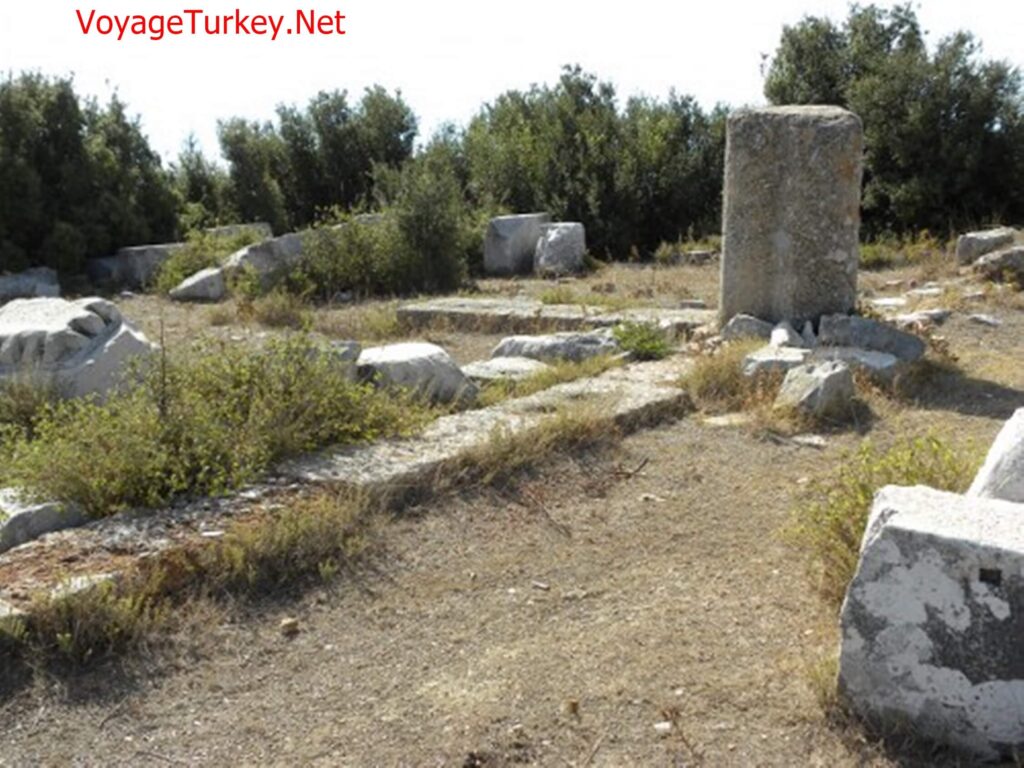
The theater, which was estimated to have been built during the Hellenistic period, is thought to have been transformed into a Roman theater during Hadrian’s reign.

The ruins of a bouleteron (council house) are also worth seeing.
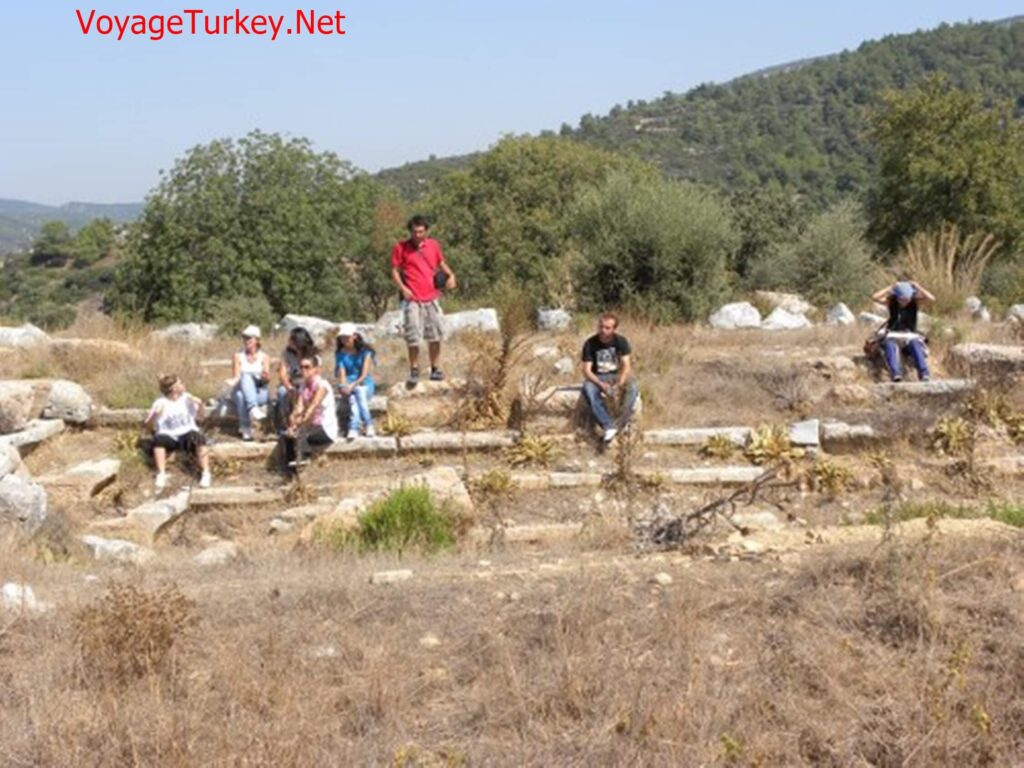
Entrance Fee
The entrance to this ancient city is free of charge.
